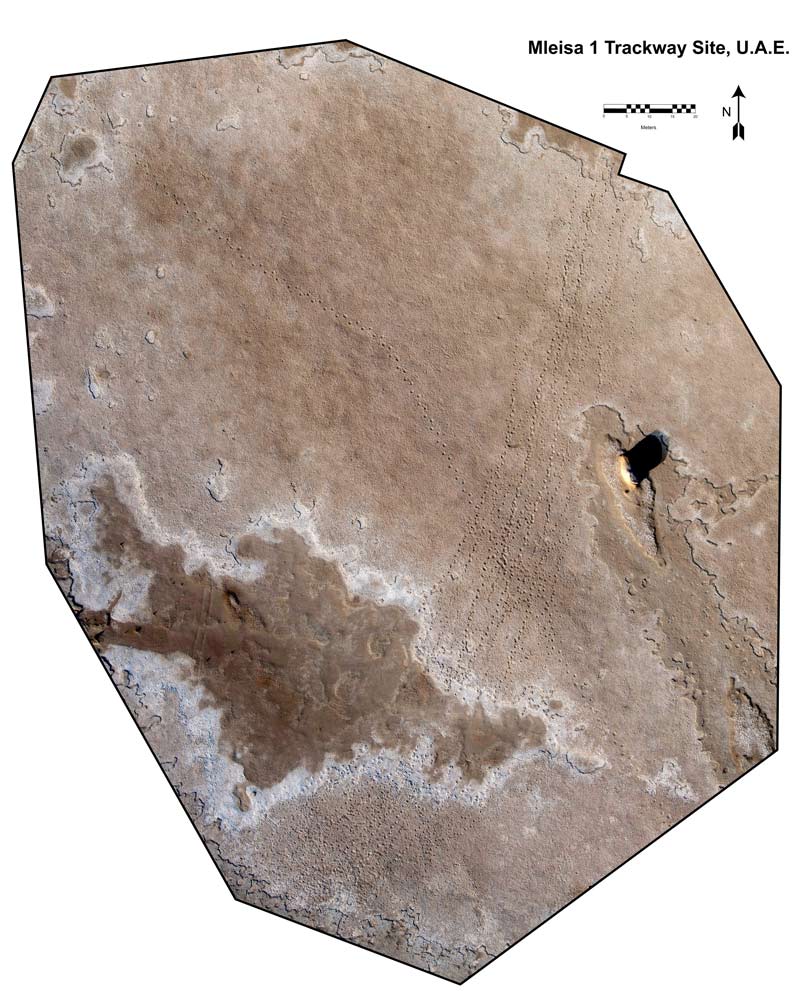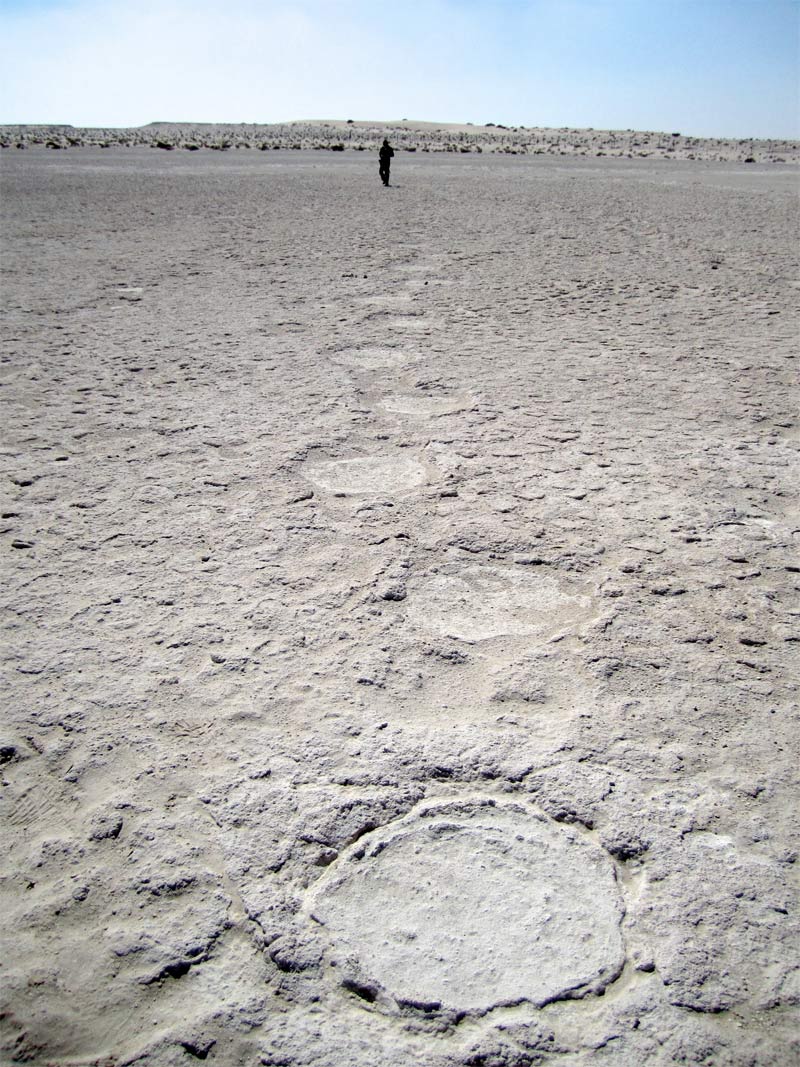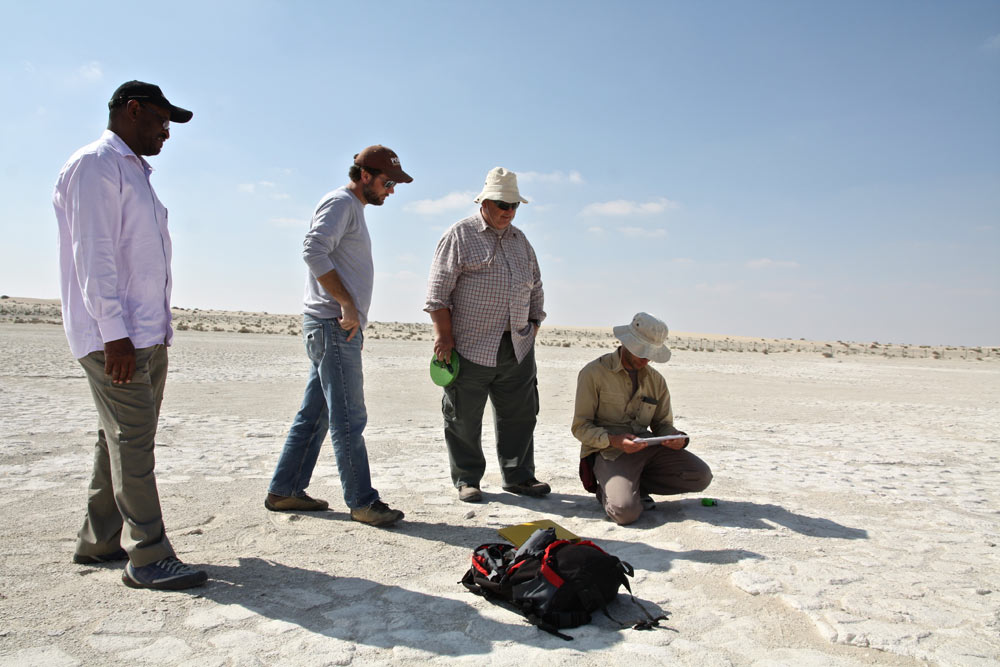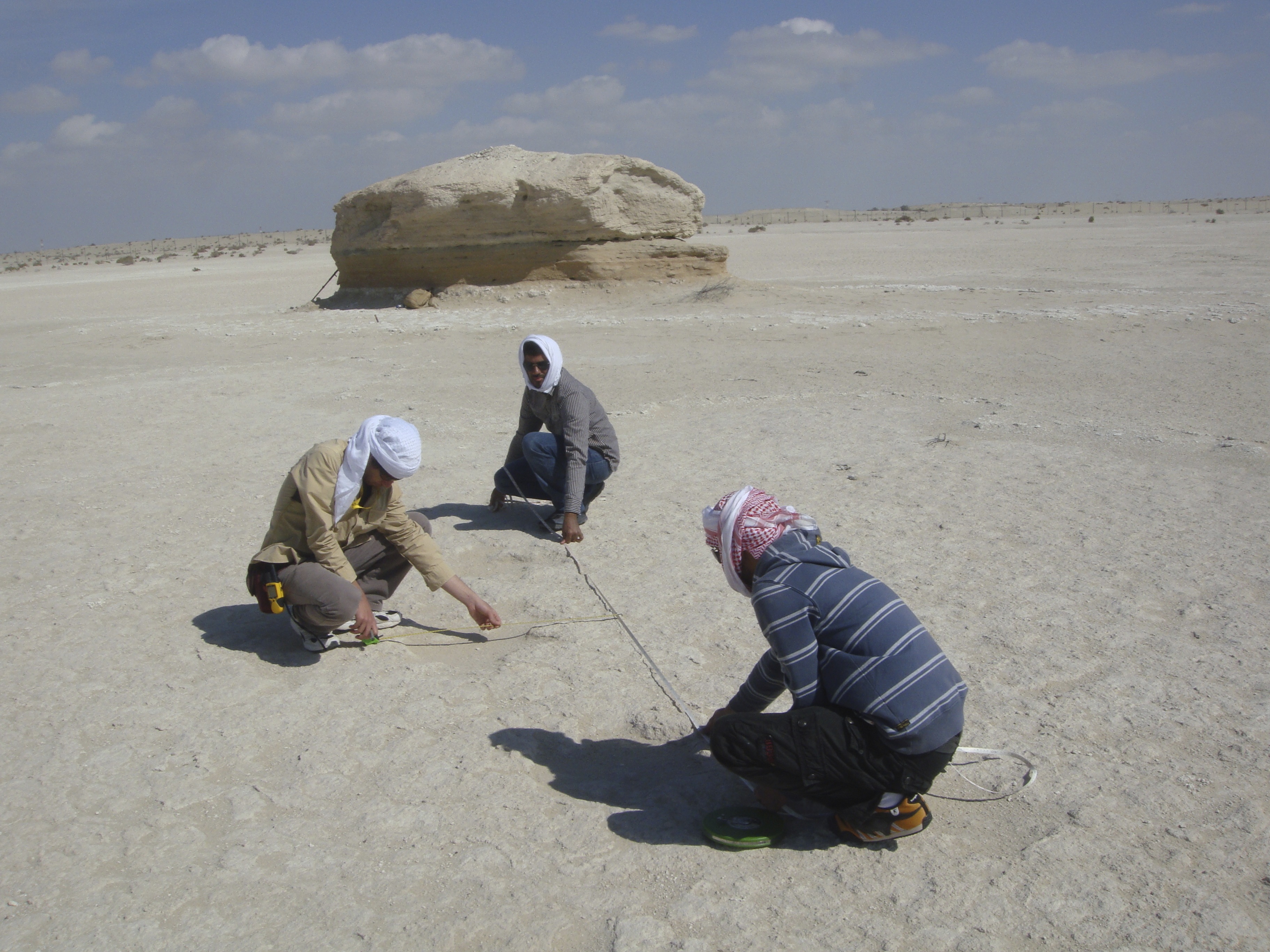Album: Finding Elephant Tracks in the Desert
Earliest Elephant Herd

A reconstruction of the Stegotetrabelodon syrticus herd that likely made the tracks in the Arabian Desert. [Read full story]
Kite Photographer

Nathan Craig preparing a kite for low-altitude photography of the elephant trackway site. The researchers mounted a pocket digital camera onto the kite, stitching the hundreds of pictures it took into a single large mosaic image that gave a broad overview of the site.
Footprint Mosaic

Close-up of the kite aerial photomosaic with color mapping of the trackways.
Elephant Trackway

The footprints in the trackway (shown at left) likely came from 13 four-tusked elephant ancestors. Shown right, one of the better-preserved prints in the trackway.
Aerial Trackway

An aerial view of the elephant tracks, covering an area equal to nine U.S. football fields, revealed the stunning footprints.
Single Track

An isolated track from the herd of proboscideans in the Arabian Desert.
Tracking Elephant Tracks

Researchers at the so-called Mleisa 1 trackway site in the Arabian Desert where the 7-million-year-old footprints from a four-tusked elephant ancestor were found. From left to right, Ahmed Abdalla Al-Haj (ADTCA), and co-authors, Brian Kraatz, Mark Beech, and Faysal Bibi.
Get the world’s most fascinating discoveries delivered straight to your inbox.
Desert Fieldwork

From left to right, co-author Faysal Bibi collecting field data with archaeologists, Abdul Rahman Al-Nuaimi and Abdulla Al Kaabi at the elephant trackway site. [Read full story]
 Live Science Plus
Live Science Plus






